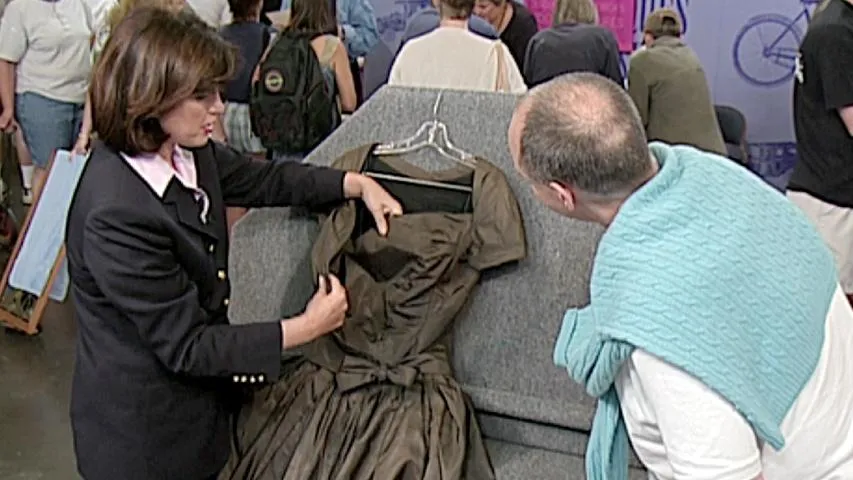GUEST: This recently came to me from my grandmother, and it's been in her house for as long as I can remember. I don't know anything about it.
APPRAISER: One of the first things one notices about this chair is the width of these members. Very thick stile and the crest rail, that's what this is called, the crest rail. Doesn't need to be this large to give it the strength that it would need to support whoever sat in it. The second is as we go down the front of the chair, it's got these angular members and this angular kind of apron. That's a characteristic of furniture that was made in one place in China: the port city of Canton. Cantonese furniture has this very angular kind of outline. You'll notice that that continues up here to the crest rail, and also, the width of these members is characteristic of Cantonese furniture. You'll notice that it's got a solid panel seat. That's a little bit unusual because it's not comfortable. You didn't think it was comfortable, did you?
GUEST: It's not comfortable.
APPRAISER: Okay. Most chairs that are Chinese actually have cane seats. And we known that cane seating was used for chairs in the Ming dynasty. Now the question becomes, was this in fact originally a cane seat and they put a panel in, or was it always a hard panel? Let's turn it over and see. And as we look at the underside, we'll see that, in fact, there are no holes here to indicate that it was caned. So this panel was here originally, and that tells us that this was always a hard panel seat. It was made in Canton. The wood, as I look at it, this is a wood called hong lou, characteristic of Cantonese furniture. So in fact, we know it was made in Canton in about 1880, made probably as part of a large set, and this as a single one is about $200 to $300.
GUEST: Okay, I didn't realize it was so old. Thank you.











